Greece – what pops into the head? Athens and the islands I bet! Well – that’s OK. But I’m hoping that this might prompt you to consider the Peloponnese – it’s perfect (I think!) as a stand alone destination but equally works well as part of a longer Greek itinerary. It’s easily accessed from Athens and has everything you’d expect from a Greek vacation – ancient sites, lovely towns, great beaches, amazing food – and yes – it even has it’s own islands!!
From the moment the wheels cross onto the peninsula, familiar names jump off the map. And no! – you don’t have to know your Greek history – you don’t even have to LIKE Greek history, to be impressed!
Day 1
After 4 nights in Athens, we are ready to hit the road. We head back to the airport to pick up a rental and then its an easy 106km to the first famous site……
The CORINTH CANAL makes for a very dramatic entrance to the peninsula. Opened in 1893, it cuts through the Isthmus that linked the Peloponnese to the mainland, thus technically turning it into an island. The 6.4km long construction connects the Aegean and Ionian Seas, cutting some 700km off the journey around the peninsula. Unfortunately, the canal never lived up to expectations – only 25 meters in width, its narrowness made navigation difficult and doesn’t suit large modern ships. Its high sides channelled winds along its length while differing tides caused strong currents. from the beginning, many operators were unwilling to use the canal so it never reached the predicted levels of traffic. It has also been prone to landslides, causing the facility to close for maintenance on occasion – sometimes for periods of years at a time.
Nowadays, it’s mostly used for smaller recreational boats. But it’s an impressive sight. Everyone stops at the main bridge, hoping to see a ship pass through…


A mere 15 minutes further on, we reach ANCIENT CORINTH
With its fertile land and an abundant water supply, Corinth was one of the richest and most powerful Greek cities – vying with the other great city-states of Athena and Sparta. It was a great commercial hub – trading with settlements in Turkey, Cyprus, the Near East and the Italian peninsula.
It was known for its architectural and artistic workmanship. It exported black-figure pottery with its yellow clay decorated in black silhouettes. And then of course there are the Corinthian Columns – considered to be the most elegant of the three main orders (the others being Doric and Ionic).
Corinth was also associated with St. Paul. He visited around 50-52 AD and remained here for about 18 months, recognising the city as a good base for a Christian community. He later wrote at least 4 letters to the Corinthians, of which 3 are included in the New Testament.
Excavations have uncovered the city’s Roman Agora, shopping streets, temples, fountains, baths, etc. (Entrance €8).
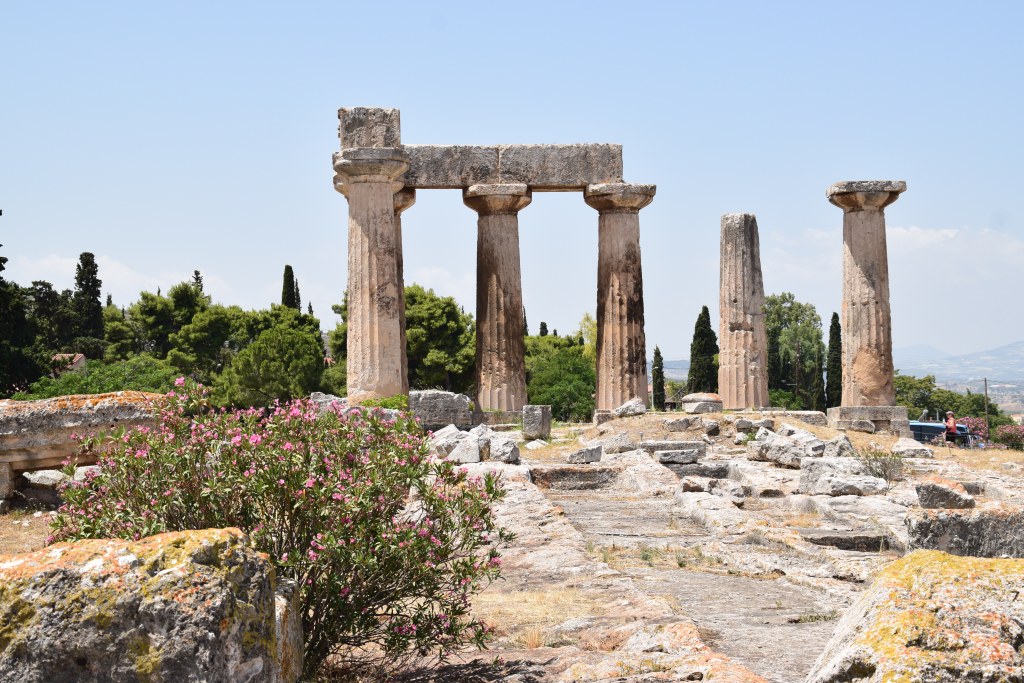
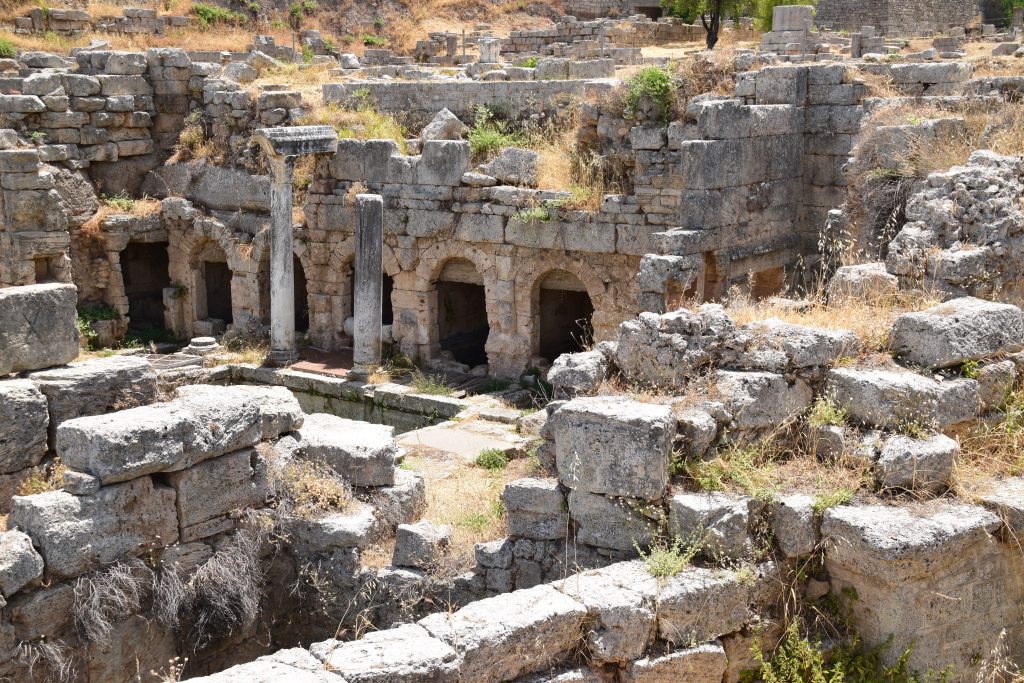
.


The ACROCORINTH – the Acropolis of Ancient Corinth – is believed to be the largest of the acropolises of ancient Greece. Towering above the ancient city, the fortifications were almost impregnable. It was reconstructed and added to by many over the centuries and was occupied up to the early 19th century.




LUNCH alas on the run! We grab some fast food in a petrol station – ah well – there’s better to come!

MYCENAE – another great civilisation of ancient Greece. Located 48kms south of Corinth, this was the kingdom of the legendary King Agamemnon, who commanded the Greeks during the Trojan War. Dominating the eastern Mediterranean world from the 15th >12th century BC, the city played a vital role in the development of classical Greek culture. It was a very prosperous town – Homer described it in the Iliad as being ‘rich in gold’ and the king ruled over a highly organised feudal system.
The archaeological site includes the fortified acropolis, religious and residential sites and monuments as well as a museum. The location is stunning.
The site was inscribed in the UNESCO World Heritage List in 1999. (Admission €12).
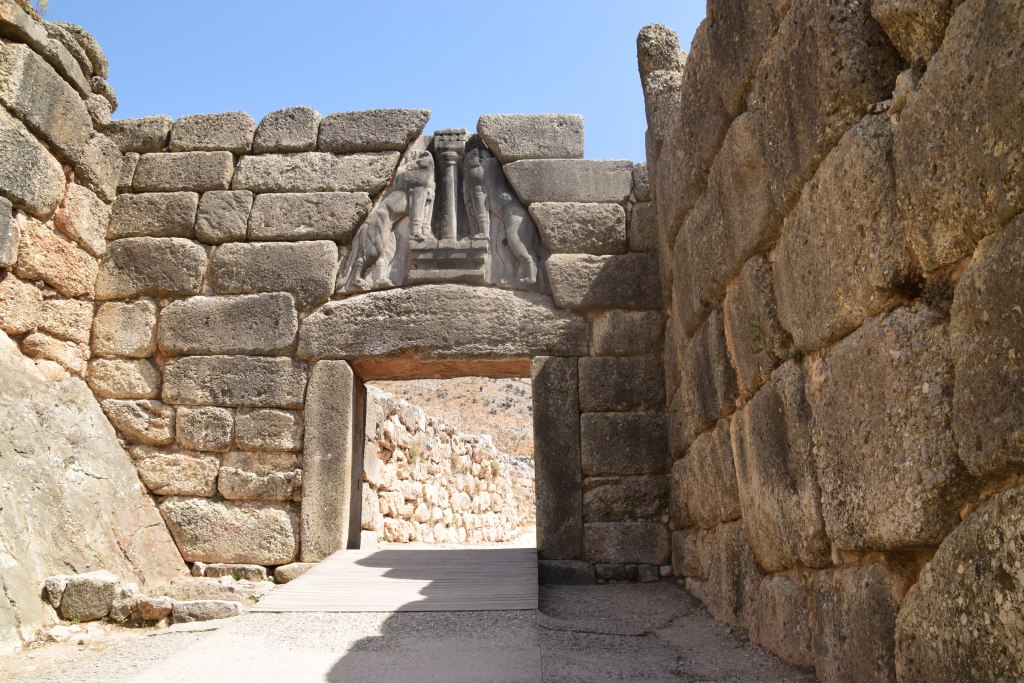



Well!! That’s enough ruins, walls, steps and history for one day!
NAFPLIO seems like a good spot to base ourselves for 2 nights. Heavily marketed as one of the most beautiful towns on the peninsula, we just hope it won’t be too touristy.

First to our digs – ALKMINI HOUSE (Airbnb) offers parking (on street), nearby convenience stores and is walkable into town (circa 10 minutes). The neighbourhood isn’t exactly picturesque but is quiet and safe and we are happy with our 2 nights there (Total €117.37)
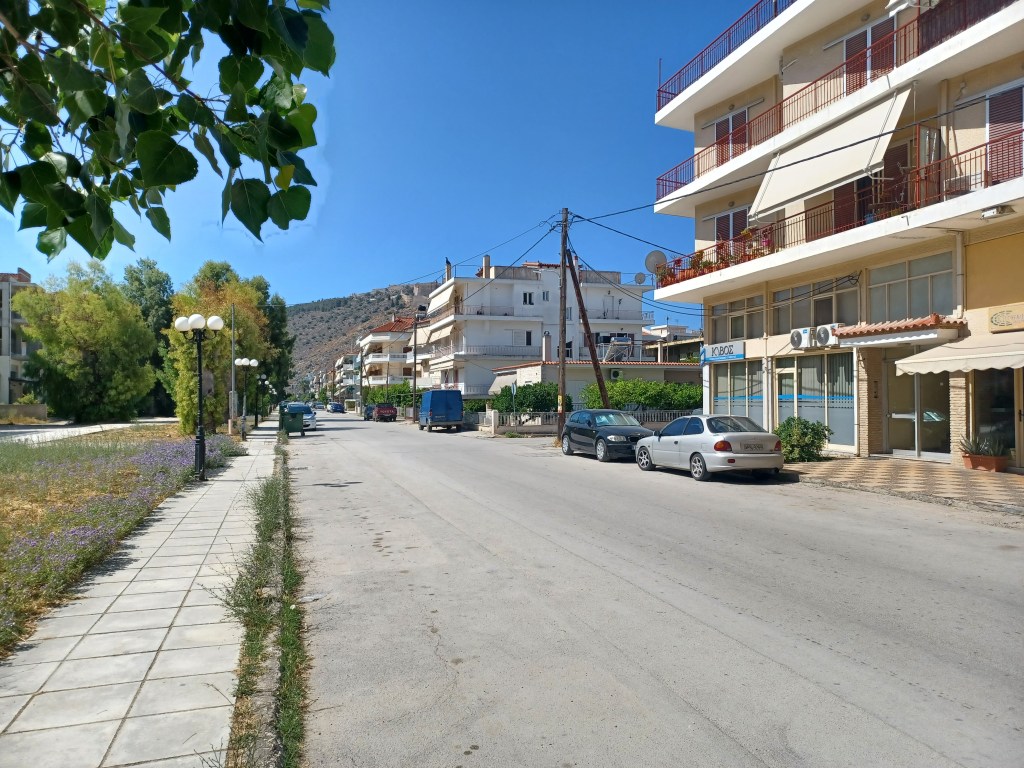



According to mythology, the town was founded by Nafplios, the son of god Poseidon . The town’s history traces back to their soldiers participating in the Argonautic expedition and the Trojan War. Roman, Frank, Venetian and Ottoman all left their mark on the town’s culture and architecture. Its most recent claim to fame is that of being the first capital of the newly born Greek state (1823 – 1834).
The town really is lovely and deserving of far more attention than we bestowed. With so many amazing sites to occupy us over our few days, we were never going to climb the 999 steps to Palamidi Castle or take a boat out to Bourtzi Fortess in the middle of the harbour.


Instead, we spent our 2 evenings strolling the promenade, wandering the back streets and alleys, enjoying the sunsets and selecting restaurants – ah! work! work! work!











Day 2
A 30 minute drive from Nafplio brings you to the UNESCO site of EPIDAURUS. I wrote about this wonderful site separately here but enough to say that it’s well worth a visit!
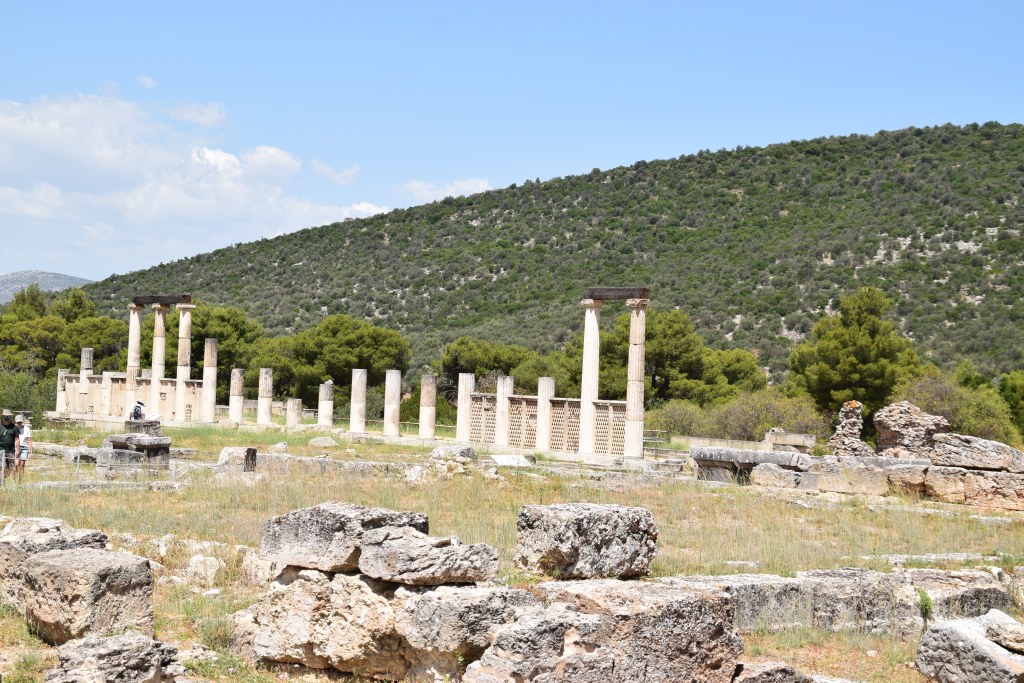



And now for something completely different! If you haven’t a huge amount planned for the day, it’s worth taking a 40 minute meander through the backroads to the village of DIDYMA to see the wonderful SINKHOLES!
The sinkholes – or DOLINES – collapsed thousands of years ago, leaving massive craters. Stone tools found on the site of the large doline suggest occupation from prehistoric times…..

….. but this is the real find! The smaller crater hides a lovely surprise – a carved staircase and tunnel through the rock brings you to a tiny Byzantine church.
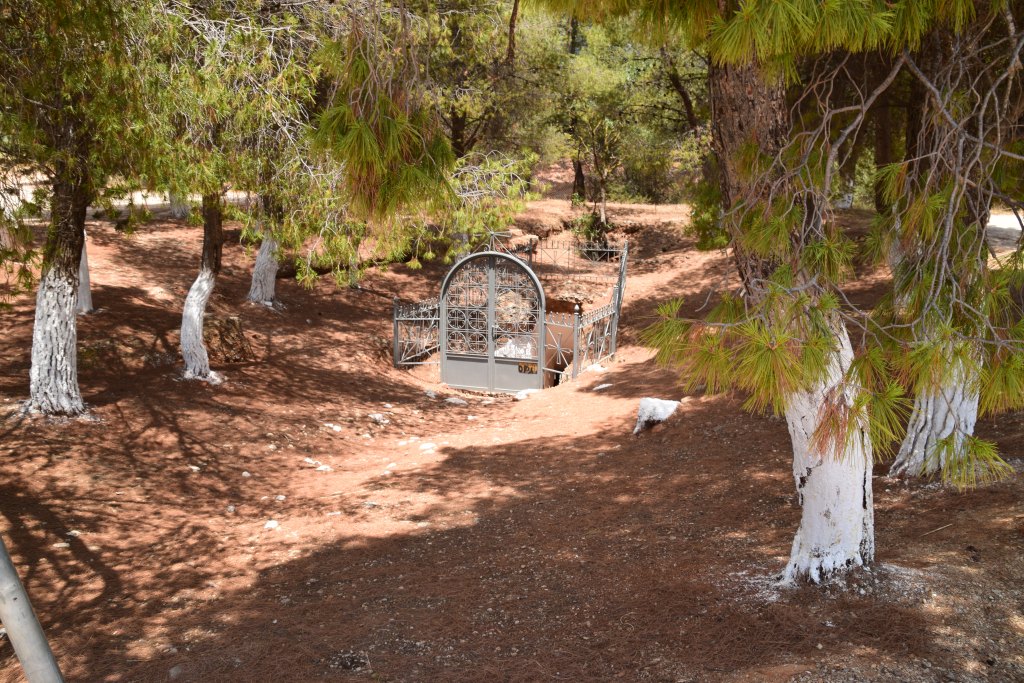
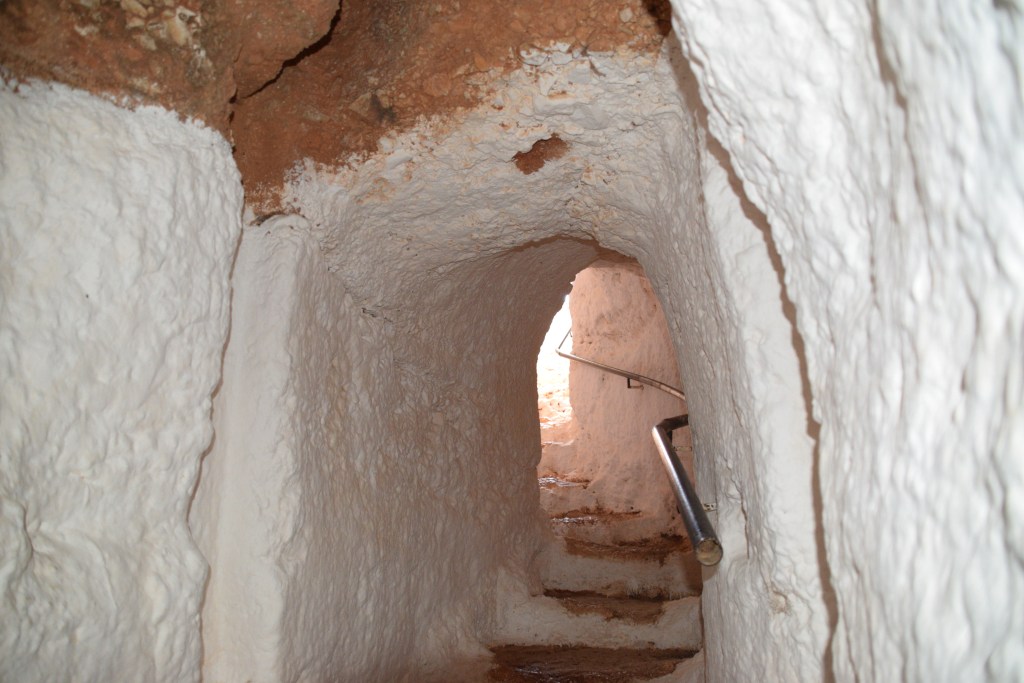


Time to hit the beach. We though we could loop back towards Nafplio ( I like loops) but ran out of road eventually and had to double back.
KARATHONA BEACH is just a few kms out of town and one of the most popular in the area – even off season (June), this is the place to be on Sunday afternoon! We lunched in one of the beach bars, paid up our €10 for beds and an umbrella and had to drag ourselves away at 7.00pm….




Day 3
We’ve a good distance to go today so just have a very quick look at ARGOS – about 30 mins from Nafplio. I recognise the name all right but I suspect its mostly because of the Argos Catalogue!!!
There’s plenty of history here -seemingly Argos is the second oldest Greek city state – but I don’t think it sees many visitors nowadays. Close to the ruins of the agora is what remains of what must have been a very fine amphitheatre – with 90 steps up a steep incline, it was one of the largest theatres in Greece, holding about 20,000 spectators.


It takes most of 90 minutes to get to SPARTA – now this is a name we all know! A culture that seemed to centre entirely on war, we learned of it in school as the great enemy of Athens. Instead of philosophy, art and theatre, boys from a very young age studied how to fight. The role of the female was to bear strong children – preferably sons. Unhealthy babies were abandoned or killed – there was no room for weakness in this society!
There isn’t much here today but it’s still worth a walk around the site…




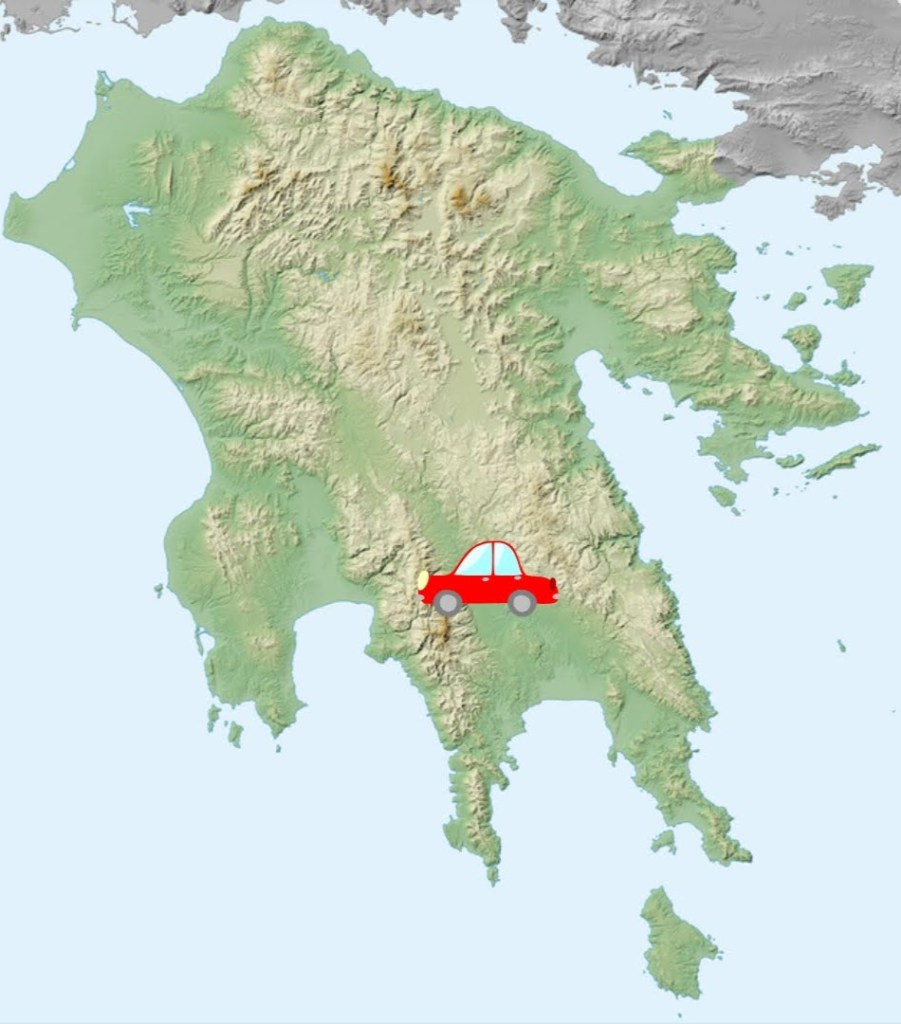
And close by is the Byzantine city of MYSTRAS. I wrote about it here and must say this is definitely one of the highlights of the trp..




We’d lunch in the local village before our 2 hour drive to PYLOS

PYLOS is a lovely spot in which to end up after a long day.


By 6.00pm we are checking into HOTEL MIREMARE (€69). It’s down there – right on the water…..

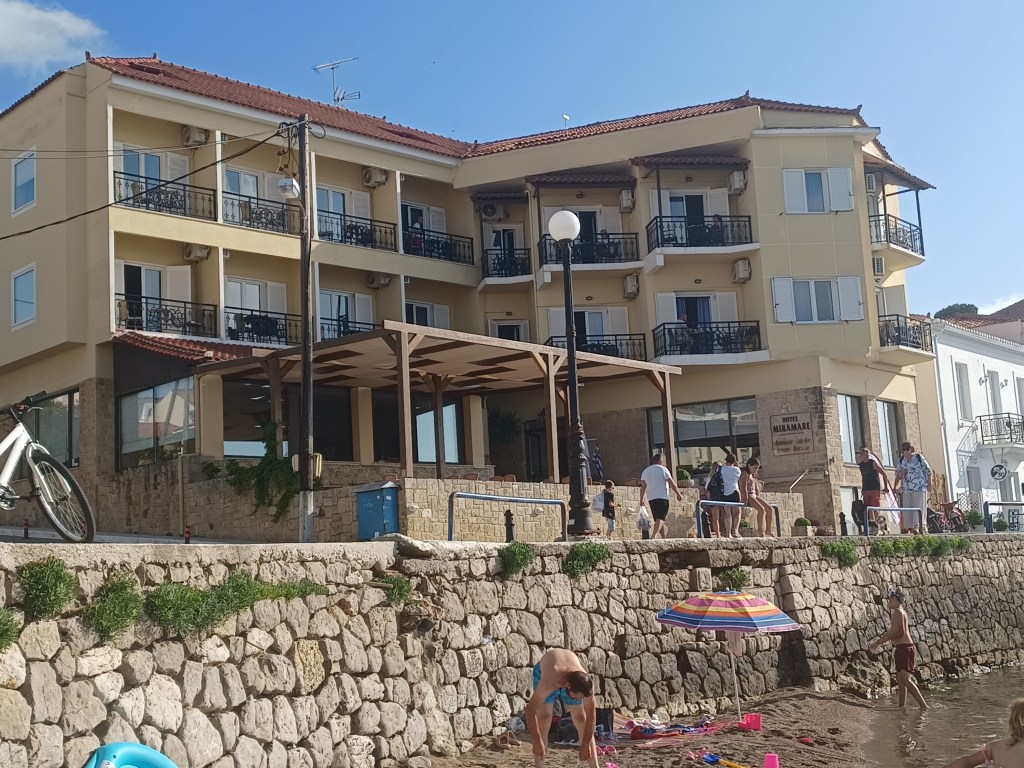



There’s our view – its not much of a beach but a quick evening dip is exactly what we need…


It doesn’t take long to explore the little town and its environs…..




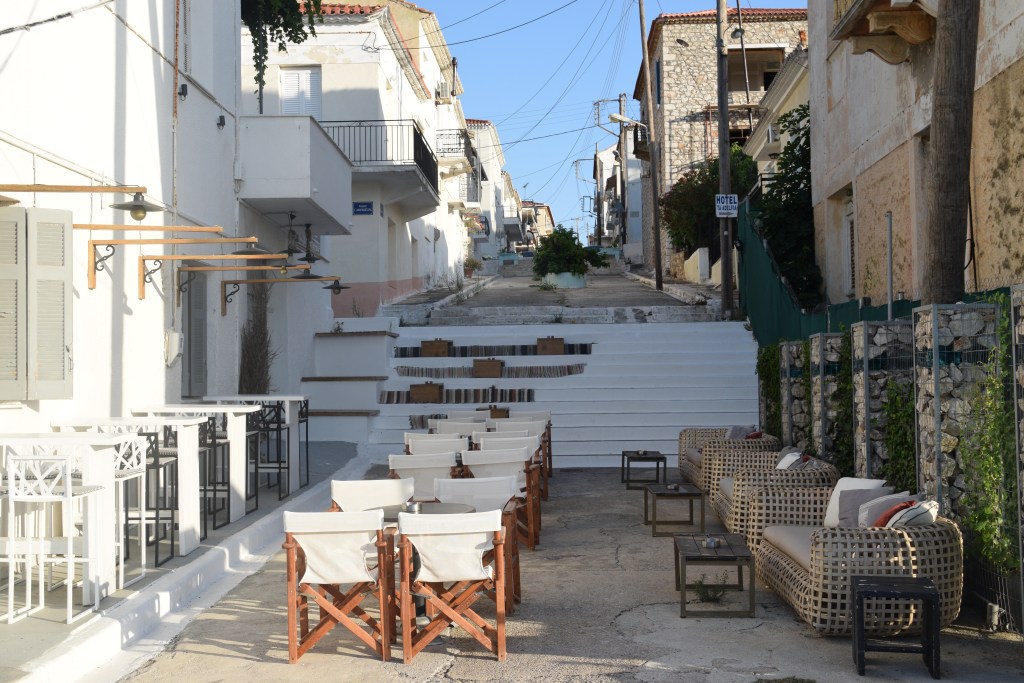
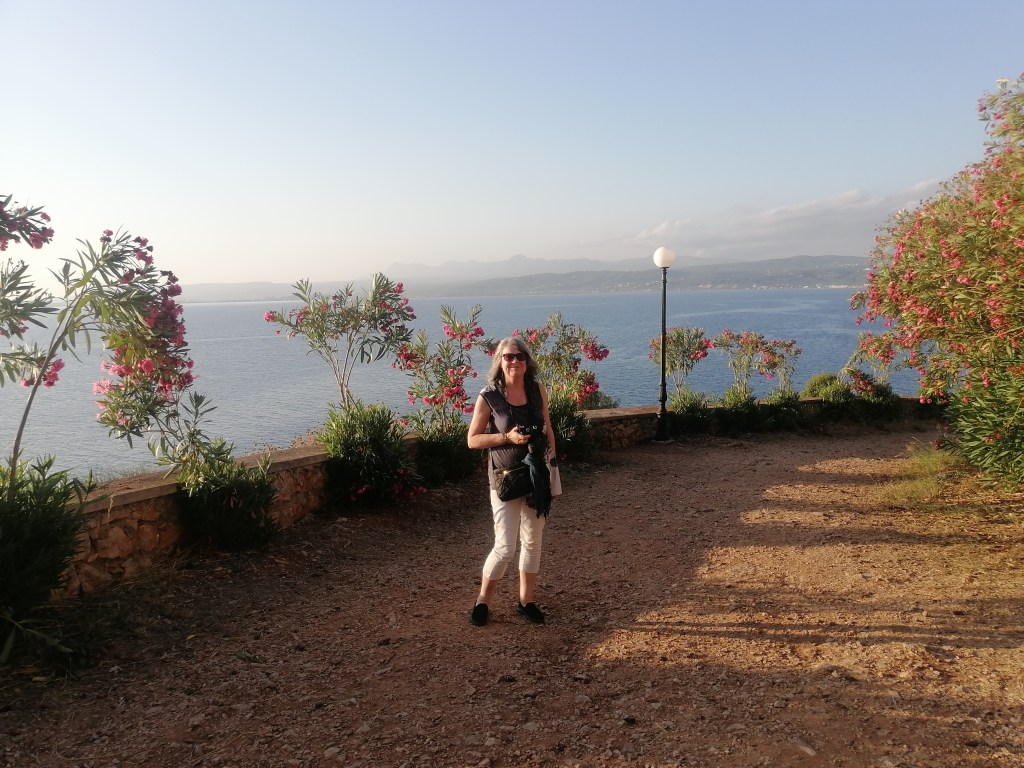


…..before finding another idyllic spot to watch the sunset……
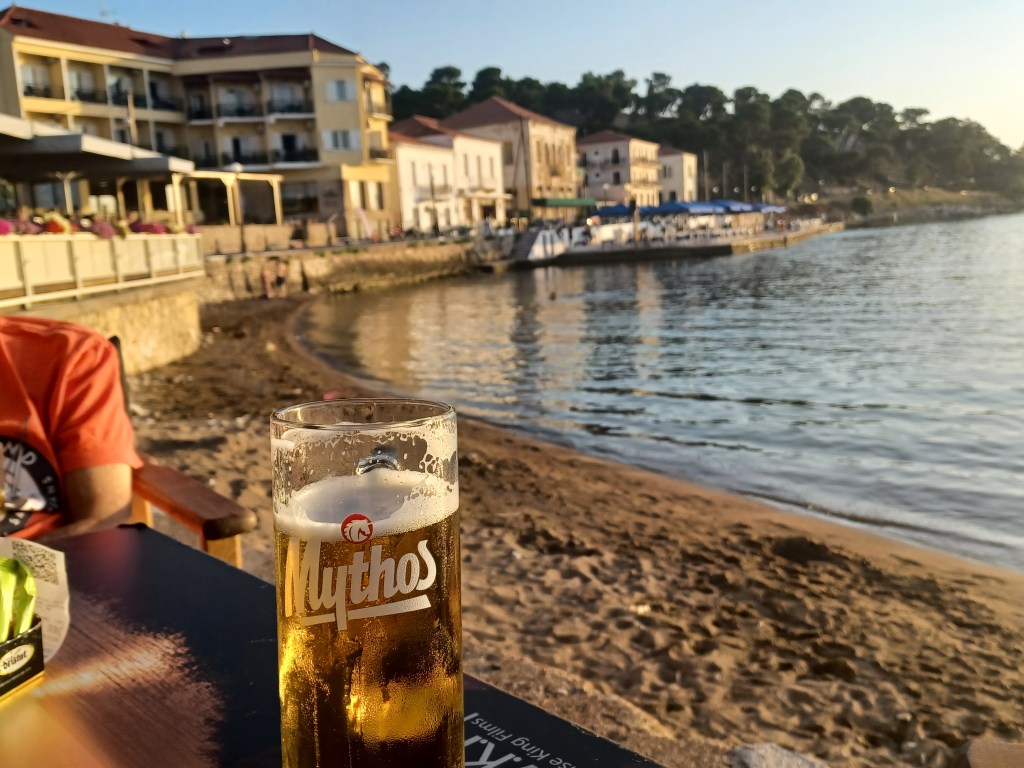

….and enjoy the local fare.

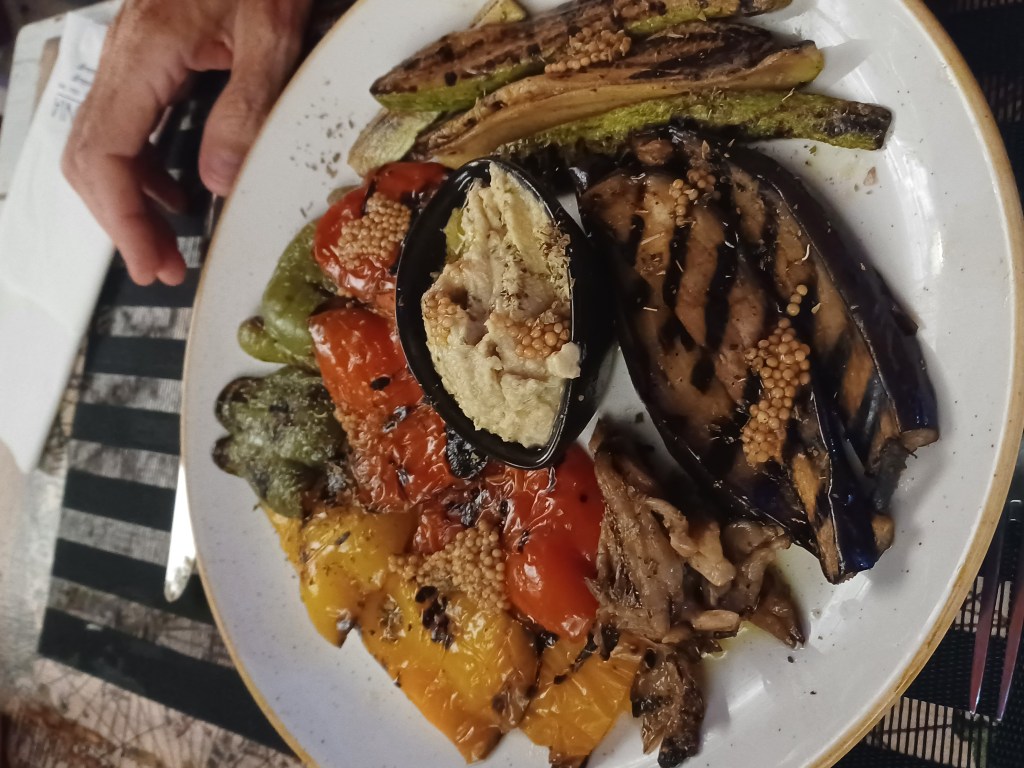
Day 4
Just look at this place!!! VOIDOKILIA BEACH – about 20 minutes from Pylos – is shaped like the Greek letter OMEGA. Not a sunbed or umbrella to be seen (which actually worked against us because we’d no shade so didn’t stay as long as we’d intended).
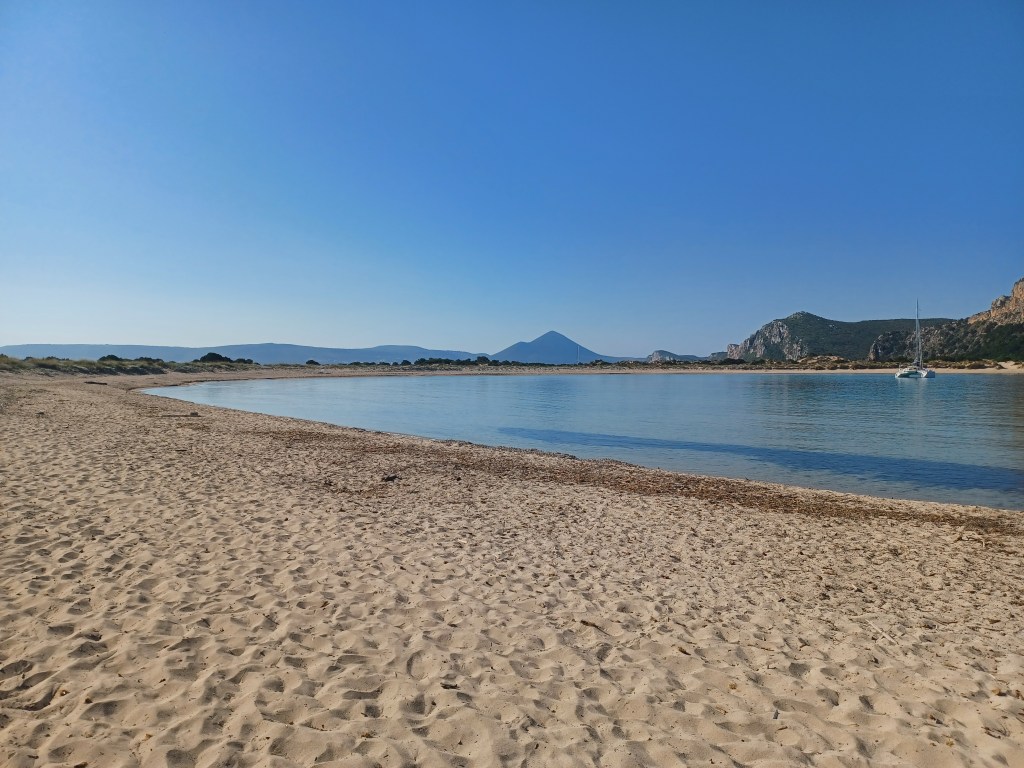


Ah!!! typical Irishman – not trusting the water!!! He still thinks it might be as cold as the Atlantic or the Irish Sea!!!!

Our premature departure from the beach means that, despite a 90 minute drive, we’re able to reach OLYMPIA by lunchtime.

I’ve absolutely no expectations for the town, expecting a typical horror which exists purely to service a nearby attraction. Actually it’s not bad at all…



We decide to share a Greek salad and fries for lunch at the lovely Symposio Taverna….. just look at the single portions!! …. freshly prepared and delicious!
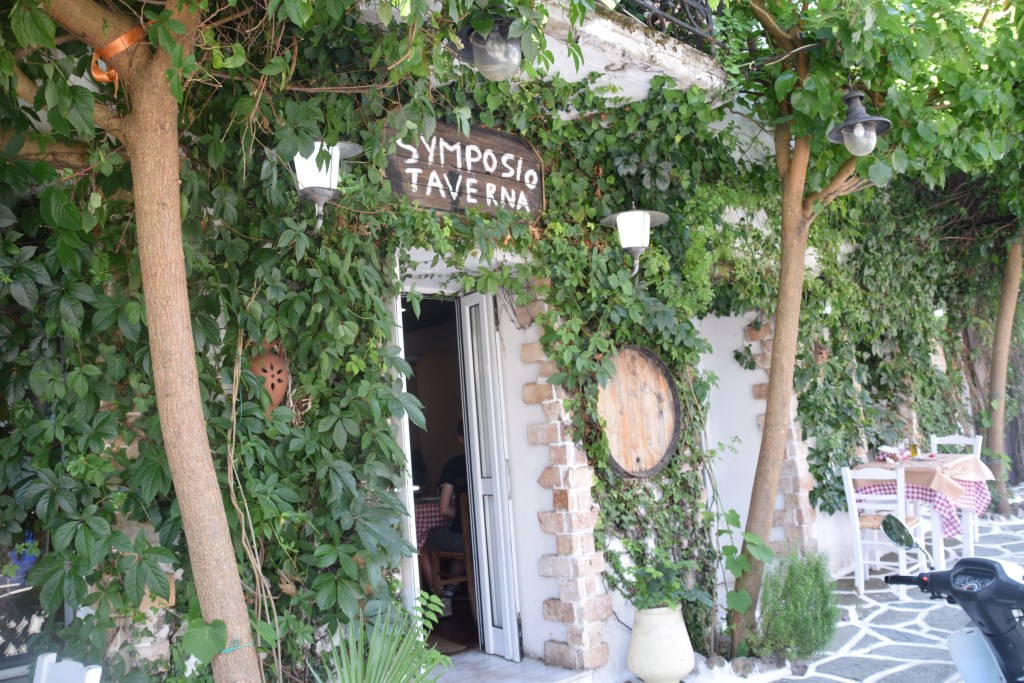


The archaeological site – birthplace of the Olympic games – is quite extensive and, while little remains of the incredible temples and athletic facilities, a wander through the scattered ruins and the ancient stadium still evokes a sense of former glory. The Olympic Torch today is lit at the altar at the Temple of Hera. This was a centre of worship of Zeus and the massive statue of the God – circa 41feet in height – was one of the 7 wonders of the ancient world. There is so much history here….
(Site Admission €12)


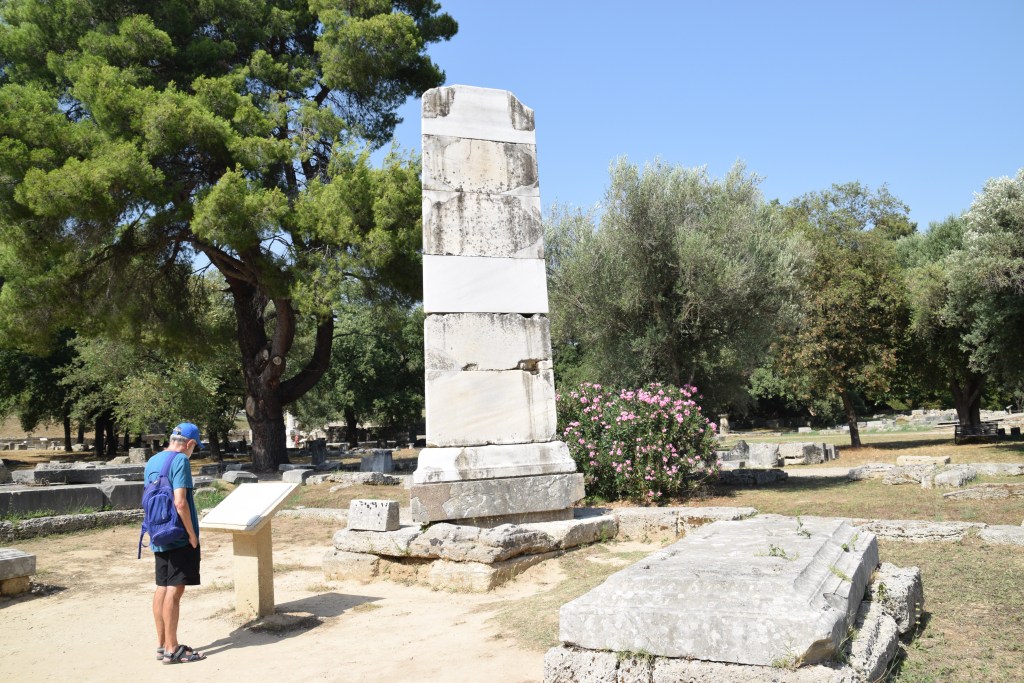

It’s HOT!

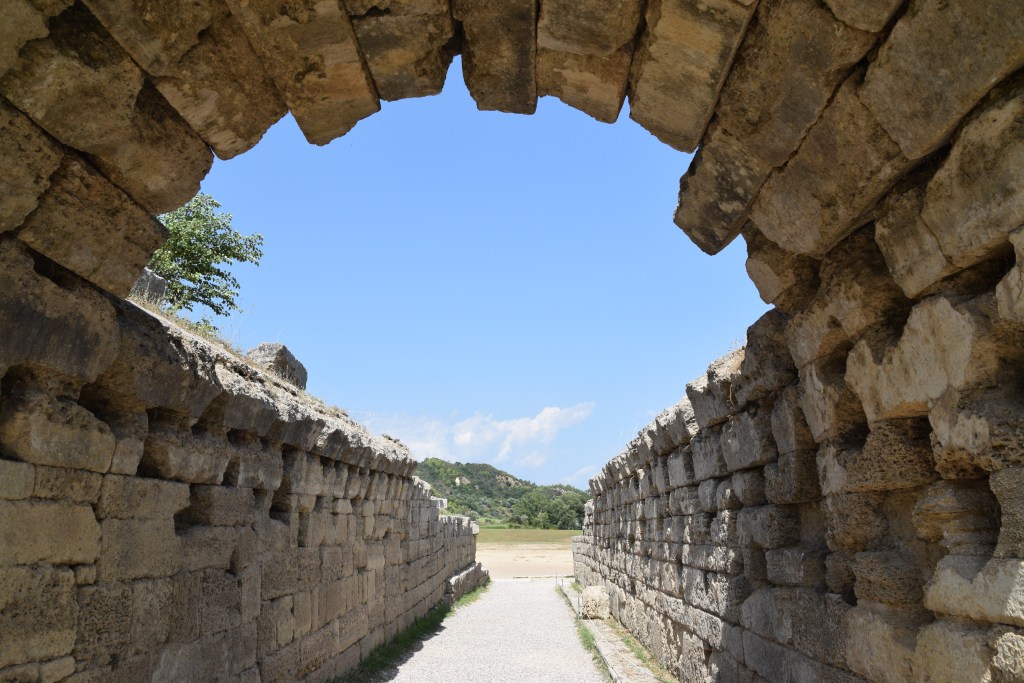

HOTEL KRONIO, located in town, is an easy walk to the archaeological site which means we can dump the car and forget about it. The 3* hotel (€51.38) is fine for a one night stay.



I really, really want to go back to our lunchtime taverna but with just one night in town we reckon that’s a bit sad and lazy! ANESIS is close to our hotel and seems popular. No frills but no rip off either and a chance to sample Pastitsio – the Greek answer to Italian lasagne with macaroni and minced meat (which I could live without, to be honest!!).



Day 5
We’re leaving the Peloponnese via the rather impressive RIO-ANTIRRIO BRIDGE.

This is a relatively new construction, the first people to officially cross it being the Olympic torchbearers of the 2004 Olympics.
At 2,380-metres (approximately 1.8 mile) in length, it’s one of the longest cable-stay bridges in the world.

Surprisingly quiet…..

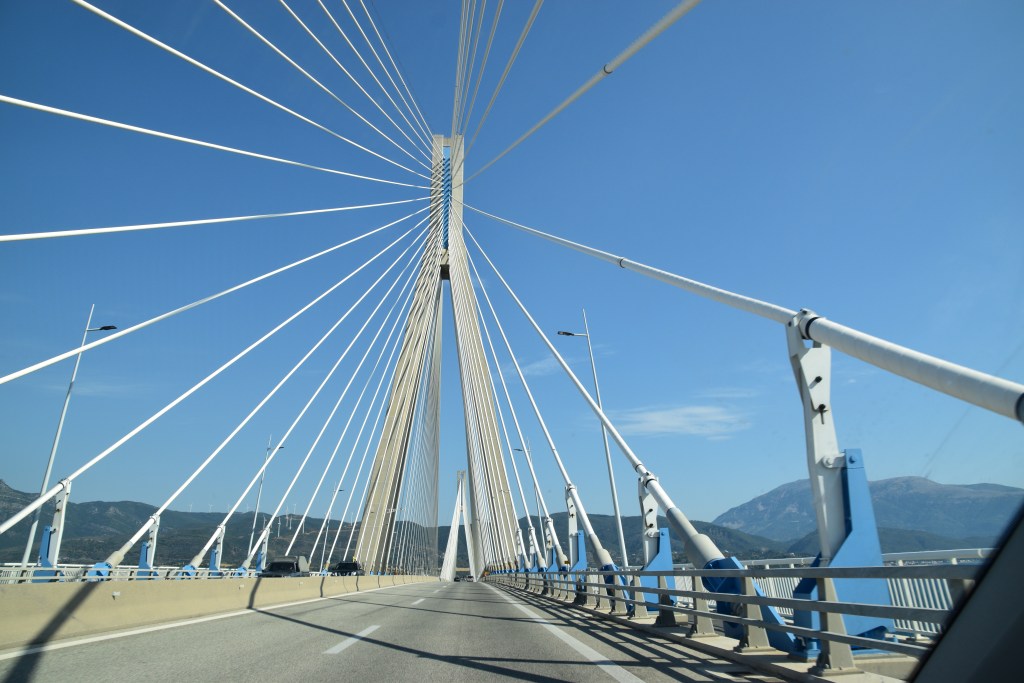
…. Ah!… that’s probably the reason!

So there you have it – 4 very busy days. From here, its 2hrs 15 mins back to Athens airport but we’re not going back – we’re heading to Delphi and beyond…. What an amazing country!

Postscript
I wish we’d a week! There is SO much more to the Peloponnese than outlined above. We didn’t even get to see all the UNESCO sites – missing out on TIRYNS and BASSAE. There’s the MANI PENINSULA which supposedly offers one of the best coastal drives in the country. The village of MONEMVASIA , connected to the mainland by dyke. The famous SIMOS BEACH. The RACK-RAILWAY through the GORGE OF VOURAIKOS….. AND… AND…. AND….
Final Thoughts….
We visited at the end of June so everything was relatively quiet and pre-season. Most archaeological sites were practically deserted, there was no queuing for popular restaurants etc. and there was plenty of parking available at beaches…
It might have been June but it was HOT! There isn’t much shade in those sites so walking around was tough at times.
Driving was straightforward and stress free (but high season might be another story of course!)


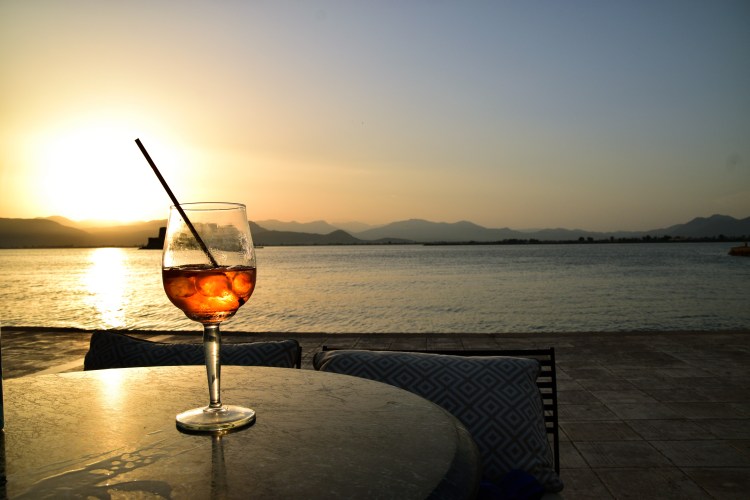
Wow, what an amazing and scenic road trip, Marie. I’ve never even heard about Peloponnese, so thanks so much for introducing me to yet another place that goes straight onto my never-ending travel wish list. I am glad to see you had an amazing time – sunsets in Greece are quite spectacular and so is the gorgeous blue sky. Thanks for sharing and have a good day 🙂 Aiva xx
Ah — the wish list that never shortens!!! It would be a great place for an RV Aiva – bit of a drive from Sligo though!!!
What an incredible road trip! It’s smart to go before high season so you can experience places without all the crowds. So much to see and do in Greece!
I was a teacher for 36 years Lyssy – so never managed to travel in Europe off season – we battled with crowds in Italy, Spain, etc. in July and August. Especially Italy! Picture us looking for a parking space in Positano or Venice in the first week of August!!! Travelling in June has been a pure joy – the weather is gorgeous and there’s no queuing or fighting for space.
Thanks for the incredible tour. How I would love to have been right there. 😉👏
Me too!!!! I’d go back in a flash! What would I give to sit at one of those bars at sunset with my glass of vino!!
Hey you really are following quite a bit of the route which we did last year, lots of these places were on our itinerary. We even stayed in exactly the same hotel in Olympia – the Kronio. It’s good reading about it again, bringing back good memories. Were you able to still see where last year’s fires burned, so close to the edge of Olympia town. It was incredible that it stopped where it did, so fortunate that a lot more homes weren’t destroyed.
It’s a great place for a trip isn’t it – although are you like me – thinking of all the things we missed out on – which is exactly why travel wish lists never shorten!! I must admit we never noticed the signs of fire – probably concentrating on directions to hotel etc!!!
It was all raw then – the fires had been raging the previous week and there’d been a couple of deaths. But yes Olympia was just one of the great places we saw on that tour, and as you said, the little town was a delight.
I see the photos in your post – it came very close didn’t it…
A beautiful series of archaeological sites. I particularly like the chapel hidden in the crater.
Isn’t it gorgeous! Unfortunately it wasn’t open – I’d have loved a peek inside!
I’d be making a beeline for Olympia and immersing myself in some athletics history. I read that the athlete Kostas Tsiklitirias (in Pylos) won four Olympic medals and died aged only 24 🙁
You’d have no problem doing a few laps of that stadium Roy!! Mind you, the heat was something else! Kostas contracted meningitis – he was such a young competitor and had so much potential…
Greece really does have so much to offer – what a wonderful trip!
There’s so much there – the list of what we DIDN’T see is longer than what we did!